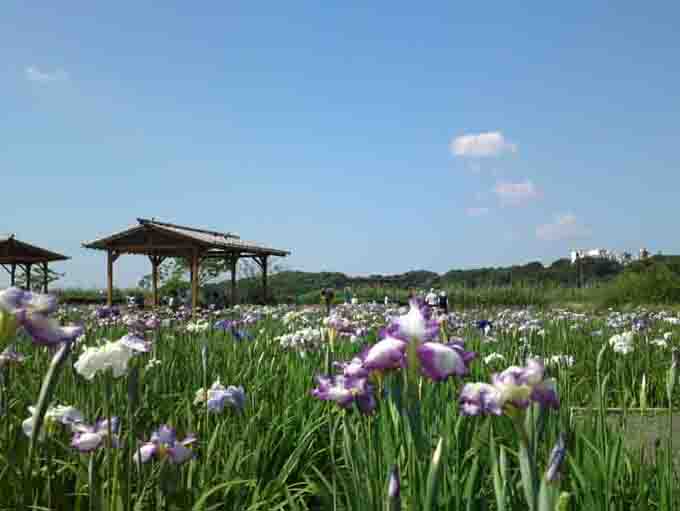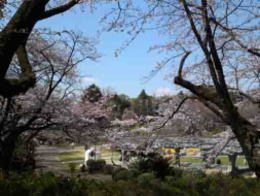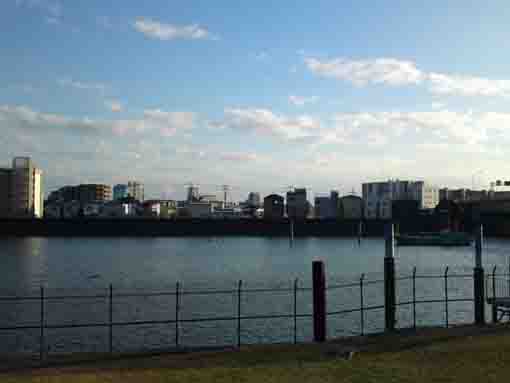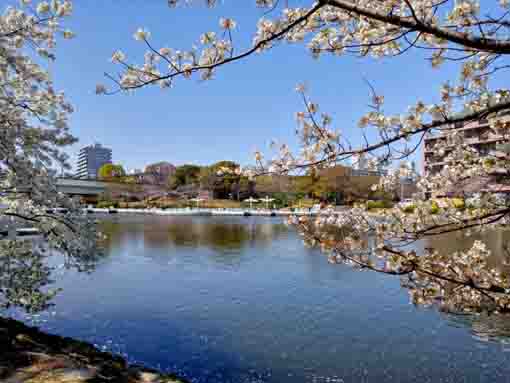Nakayama is in between Narita And Haneda International Airport
<クッキーについての同意並び欧州居住者向けプライバシーポリシー>
中山・下総・散歩道
Kokufu Jinja Shrine Related to the Prince Yamato Takeru




Kokufu Jinja Shrine is an old shrine dedicating the Prince Yamato Takeru on a small hill beside a busy way on between Ichikawa and Matsudo. According to some legends, a stork guided him the way to go across Edogawa River when he marched to go to Musashi from Shimousa, then he gave the area to the stork and he named it Konodai (storks' hill). In Edo Meisho Zue (a guide book describing Edo in Edo period), this area was introduced as in Konodai. On the other hand, it was named since there was the provincial office (kokufu) on the hill (dai).
Kokufu Jinja Shrine tells some legends of the Prince Yamato Takeru and the history of this area. Why don't you visit it?
Kokufu Jinja Shrine
Kokufu Jinja Shrine
Kokufu Jinja Shrine is an old shrine built in 1087. Some call this shrine Ootori Oogami (the great god like a big bird). When the Prince Takeru Yamato searched for the way to go across Edogawa River from the eastern bank to the west during the battles in the eastern provinces, a stork flew to him and told him the way, so he and his arm could cross the river in safe. Then he gave the land near the eastern bank to the stork and he named it Konodai (storks' hill). Therefore, the shrine dedicates the Prince. Later, this shrine was moved here and the main hall was built in 1968.国府神社参道脇案内板より
Kokufu Jinja Shrine
According to some stories, the Prince Takeru Yamato, a son of the 12th Emperor Keiko, camped on this hill after he had conquered Shimousa province in his battles in east. And he wanted to go to Musashi, but there were some rivers flowing and formed some deltas on between Shimousa and Musashi, he thought and thought to go across them on foot without boats.At that time, a stork flew to him and told politely 'I tell you a shallow point, please come after me!' The prince and his arm followed it and they could reach at the hill in Musashi.
The prince praised the stork and he gave the hill where they had camped. After that, the hill has been called 'Konodai (storks' hill). (Generally, it was the land name that the provincial office (kokufu) had been in.)
Kokufu Jinja Shrine was built in Febuary 2nd of 1087 based on some legends, so it dedicates the Prince Takeru Yamato and the principle image of it is a bill of a stork. Once, it was called Houo Daimyojin Shrine, but it was built near the remains of the provincial office of Shimousa, then it has been called Kokufu Jinja. In the site, there are other two small shrines, Inari Jinaja and Tenma Jinja dedicated.
March 1992
Ichikawashi Board of Education
国府神社鳥居裏案内板より
引用、抜粋並びに参考
国府神社参道脇案内板
国府神社鳥居裏案内板
市川市ホームページ
The Location and Access to Kokufu Jinja Shrine
Kokufu Jinja Shrine

The map to Kokufu Jinja
PDF of the map around Mamasan Guhoji and Satomi Park
The map of the noted spots along Edo River
PDF of the map of the noted spots along Edo River- Kokufu Jinja Shrine has great accessibilities from both Narita and Haneda International Airport.
- From Narita International Airport, take Keisei-line and get off Ichikawamama Sta or Konodai Sta, take minimally 45 minutes from Narita Airport. And also take JR Sobu-express line, transfer the line at Funabashi to Keisei-line, get off Ichikawamama Sta or Konodai Sta.
- From Haneda International Airport, take Keikyu-line bound to Narita, and get off Ichikawamama Sta or Konodai Sta.
- Take 6 minute walk from Konodai Sta and take 20 minute walk from Ichikawa Sta.
- 4-4-18 Ichikawa, Ichikawa-shi, Chiba-ken
The Noted Spots near Kokufu Jinja and Edogawa River

Edogawa River
The short summary of Edogawa River.
Koiwa Iris Garden and Sakura
Irises, Kawazu Sakura and many kinds of flowers blooming.
A Walk Around Mizumoto Park
People enjoy seeing the nature and culture in the areas.
Kasai Jinja Shrine
It has about 900 years history and dedicates Ieyasu Tokugawa.
Noted Spots In Satomi Park Area
The park is the noted scenic spot to see cherry blossoms, roses and colored leaves with many historical heritages.
Zenyoji Temple
This temple is famous for Yoko no Matsu, a huge black pine tree designated as a National Natural Property.
Yagiri no Watashi (The Ferryboat starts at Yagiri)
It has been carrying people since Edo period.
Kokufu Jinja Shrine
It dedicates the Prince Takeru Yamato, one of the great hero in classic Japan.
Seiryusan Honzoji Temple
It connects to Maeda Family in Kaga and Mamasan Guhoji.
Gyotoku Kaido Highway
Musashi Miyamoto and Basho Matsuo had passed the road.
Shinozaki Park
It is a popular park with many trees, sakura and so on.
Edogawaku Shinozaki Pony Land
Visitors could see horses from the bank of Edogawa River.
Joyato Park (the night light park)
It was much flourished as one of the Eastern Gates of Edo in Edo period.
A Walk on Horie and Nekozane in Urayasu
There are some shadows of Edo in temples and shrines there.
The Remain Of The Ferry At Imai in Gyotoku
Ieyasu Tokugawa used this ferry when he went hawking.
The Remain of the Ferry at Imai in Edogawaku
Socho first landed at Imai during his trip to Boso Peninsula.
Ryukisan Seitaiin Jokoji Temple
Jokoji is famous for connecting to a famous renga poet Socho and a sengoku daimyo Ujiyasu Hojo.
Furukawa Water Park
It is the first water park in Japan with Sakura in spring and hydrangeas in summer.
Shinkawa River in Edogawaku
It has some Edostyle Landmarks and thousands of Cherry Trees.
Along Shinnakagawa River
It has some wonderful seasonal views along this river.
A Walk On Shinsakongawa Water Park
It is opened along Sakongawa River in Edogawaku.
Viewing Seasonal Flowers along Edogawa River
On the banks, many beautiful flowers blooming.- 広告 Advertisement -


